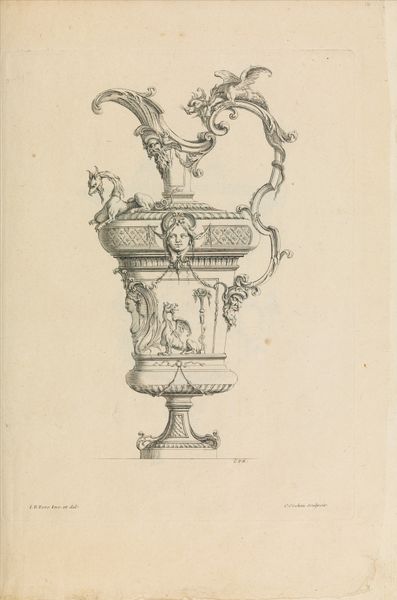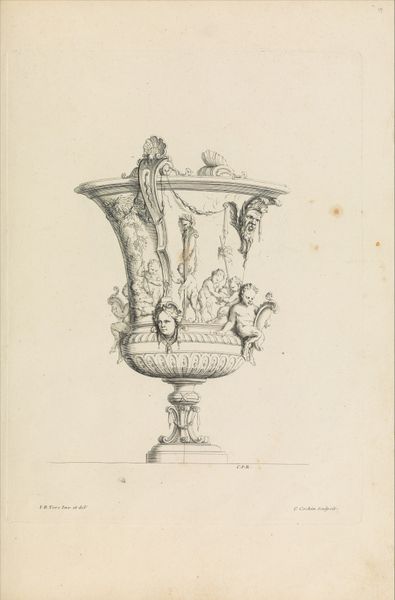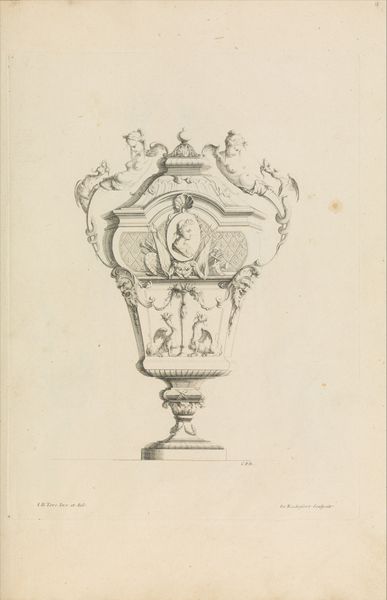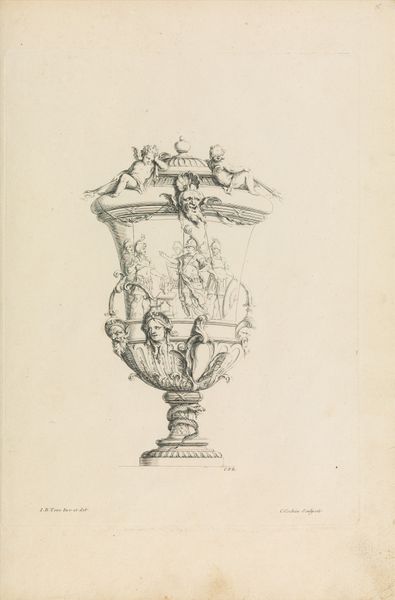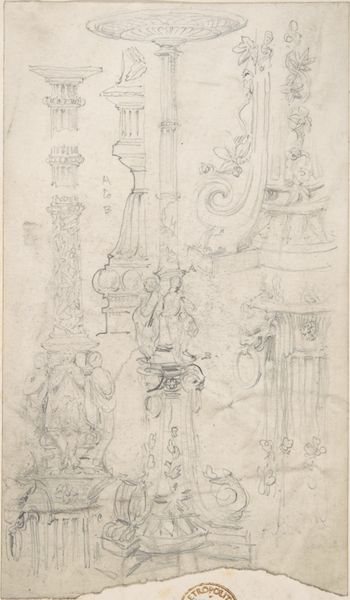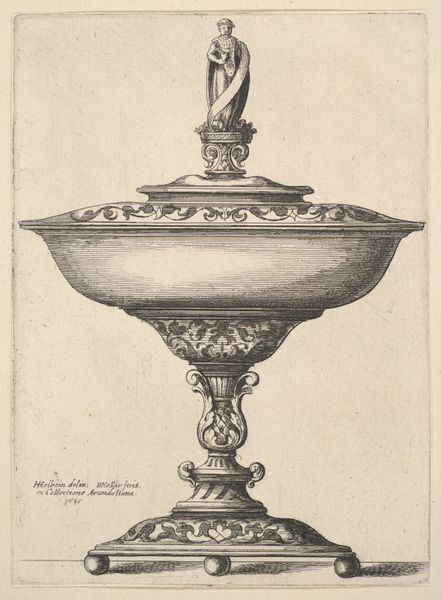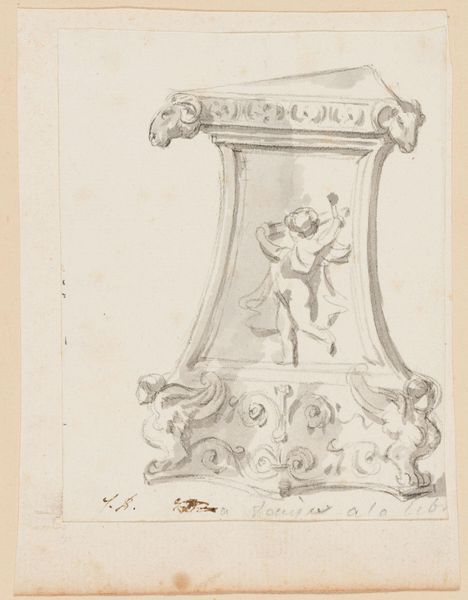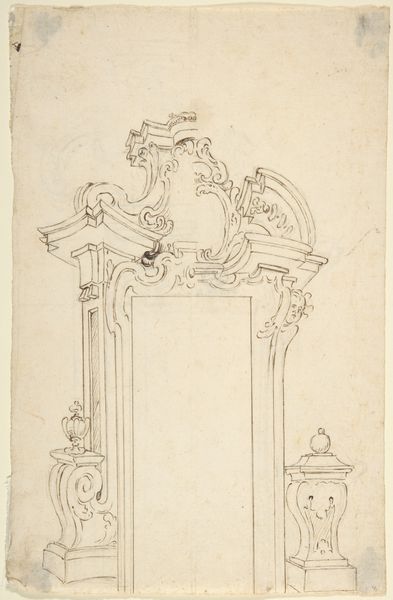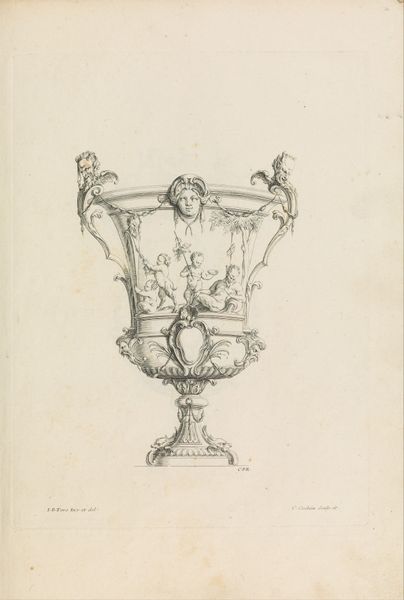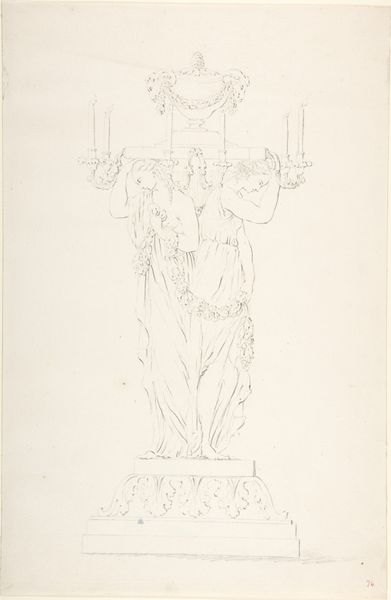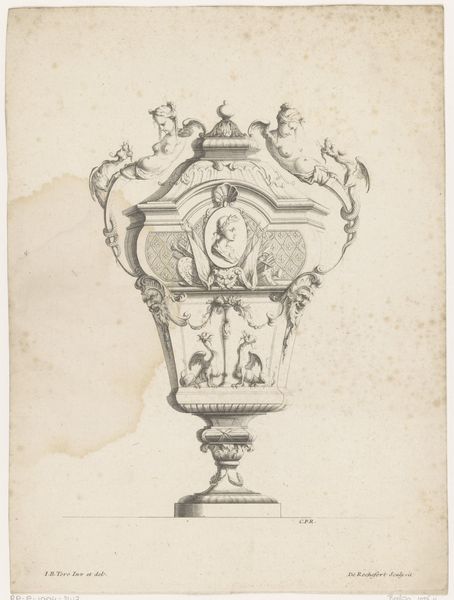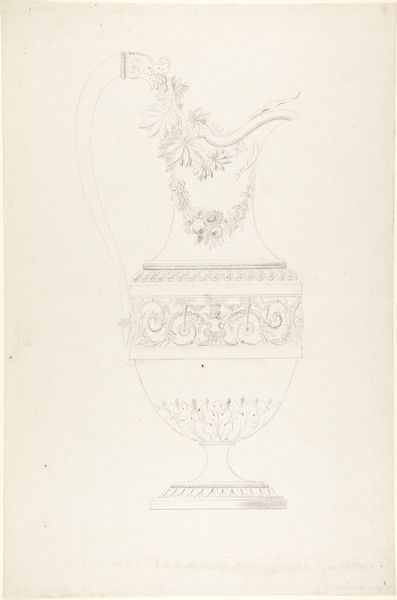
drawing, print, pencil
#
drawing
#
neoclacissism
# print
#
pencil drawing
#
geometric
#
pencil
#
academic-art
Dimensions: 12 3/8 x 8 3/4 in. (31.5 x 22.3 cm)
Copyright: Public Domain
Curator: Immediately striking! There's an ethereal quality to the pencil work, giving it a somewhat unfinished yet detailed mood. What's it all about? Editor: Well, we’re looking at a pencil drawing from somewhere between 1765 and 1795, titled “Design for an Urn.” It's from an anonymous artist, part of the Met's collection. What intrigues me is its connection to Neoclassicism; the urn itself is a potent symbol that harkens back to ancient forms, acting as a vessel of sorts, reflecting cultural reverence. Curator: Right, the urn form screams classical revival. I'm focusing more on the draftsmanship. It looks like a workshop study—probably made in preparation for carving or as part of training. The way the human figures intertwine with the ornamentation raises interesting questions about the hierarchies in production; how were those labor divisions conceived? Editor: Exactly, that period saw shifts in artistic patronage and the rise of academies, impacting production. Looking closely at the decorative motifs – those grimacing female faces – might reveal political allegiances or elite commissioning patterns. Curator: Yes, and that placement of the human figure! I would expect stone-like hardness. What is that soft effect doing there, defying the material reality that they're supposed to evoke? And those weeping faces contrast the hard, monumental, almost deathly nature of an urn. Editor: The urn served as both a practical vessel and a cultural signifier within domestic and public spaces. Their purpose varied; at times funerary and, at other times, purely aesthetic displays for the enlightened citizen. Curator: Do you think the neoclassical movement contributed to its commercialisation? Editor: No doubt. Art’s increasing accessibility can also be studied through looking at print culture during this era, revealing societal taste and aspiration. These designs had influence beyond high art and architecture and into furniture and personal decorative items. Curator: Interesting how the academic and the decorative are blurring the lines, reflecting changes in labor and artistic hierarchies. Thanks for helping to parse all the implications in terms of consumption! Editor: A pleasure! Seeing the art piece anchored to broader histories encourages us to consider these connections, questioning who was involved in producing, purchasing and appreciating it at a given time.
Comments
No comments
Be the first to comment and join the conversation on the ultimate creative platform.
